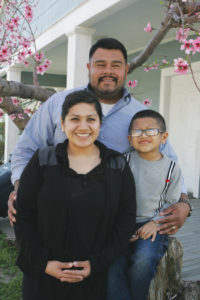
The range of opinions on the redevelopment of the area is as dynamic as the neighborhood itself. In a way, it shows how the city is recreating itself and what locals should expect from the changes. With the proposed Hemphill-Lamar connector tunnel now back on track, city officials and business leaders have big plans for the rest of the area, especially the mixed residential and commercial area east of Hemphill, close to Eddie’s.
City councilperson Ann Zadeh, whose district covers the city center, from a northeastern portion to downtown and a southern portion down to I-20, said that she’s working on a plan to complete the Hemphill-Lamar project, an additional link to downtown from the north end of Hemphill Street, which will create a more viable route for pedestrians, bicycles, and cars traveling through the city and ultimately make the street more walkable.
“I think that the people that live in the neighborhoods along Hemphill and the people who own properties in the corridor itself have been waiting a long time for the revitalization to make its way along,” Zadeh said.
The planned tunnel, to be built directly under I-30, ran into a snag after the proposed 2013 plan for $26 million fell short of another roughly $19 million for full completion. On March 1, the city announced the council’s approval of two amendments to the contract with McCarthy Building Companies. One provides $57,164 for additional pre-construction services, while another brings in up to $335,000 for re-estimating the total costs of the full project.
The connector is part of the city’s comprehensive redevelopment plan, which includes the now-established Hemphill-Magnolia urban village.
With the tunnel project now back on track, the neighborhoods along Hemphill Street are currently of special interest to the city and other civic groups such as the Hemphill Corridor Task Force and Near Southside Inc. (formerly known as Fort Worth South Inc.).
Another urban village, Hemphill-Berry, near the abandoned Berry Theater, is the latest example of the city’s ongoing efforts to fix up the entire South Side. Fresh sidewalks, lighting, and landscaping are already being done near the well-trafficked intersection. The next step is to make the rest of the two-mile stretch of residential areas and businesses between Magnolia and Berry more pedestrian-friendly.
Still, for people who have lived in the area for generations, urban projects like this one also have an ugly side. “Growth” may be just one of many euphemisms for kicking out the poor.
Fort Worth attorney Mike Daniel, who specializes in housing discrimination cases, said that, depending on the circumstances, the city’s redevelopment is just plain not good for low-income people –– especially minorities who are unsuspecting victims of urban redevelopment projects like the ones on Hemphill. In other words, redevelopment typically masks a structural problem for long-time minority residents.
“What frequently happens is that a city will starve an area of resources,” Daniel said.
Typically, he said, a city won’t provide upkeep for the infrastructure, won’t enforce codes, and will eventually pressure poor minority residents and long-standing businesses to move out, making room for affluent white residents to move in. Daniel said he’s never seen a clear case of any major city working to directly stop this from happening.
Yet Zadeh said that pushing out low-income residents isn’t part of the plan.
“The goal is to protect the neighborhood and strengthen it,” she insisted. “There’s no goal to displace people.”
David Cantu-Crouch, who works with Zadeh as chairman of the Hemphill Corridor Taskforce, a group that leads the civic charge to connect the aligning neighborhoods and businesses into a cohesive community, said that a master layout is in the works to establish a concrete vision for the area.
Part of that plan includes engaging with the current residents to include their interests. Cantu-Crouch said that working with low-income residents who are worried about being pushed out is a crucial part of his group’s efforts.
“We want everybody there to share in the redevelopment of the area,” he said.
The HCTF works with neighborhood associations up and down the corridor to address any issues that come up. However, he said, there isn’t much communication with residents from the neighborhood east of Hemphill, near Eddie’s.
Additionally, Cantu-Crouch said that a long-term goal is to eventually create a Tax Increment Financing zone in the area that would allow businesses to flourish.
That’s where Near Southside Inc. comes in. The organization made up of business owners and community leaders who regularly meet to plan the district’s growth, is pushing for an $806 million city bond for the area near John Peter Smith. If approved, Near Southside Inc. President Paul Paine said, the bond would be a catalyst for business development that could bring more retail, restaurant, and commercial development along Hemphill, close to Eddie’s. The bond will be up for a vote in the November 2016 election.
Near Southside Inc.’s goal, he said in an e-mail interview, is for the area “to grow in a way that is respectful of our history as Fort Worth’s first urban neighborhood that has a mix of uses. We are focused on serving the immediate community while welcoming people that do not live or work here but want to enjoy our restaurants and community events.”
With that in mind, Cantu-Crouch is looking forward to creating a “safer and more active” neighborhood. That includes the area near Hemphill and Baltimore, near Eddie’s Fried Chicken, an area that Cantu-Crouch calls “the last piece of the puzzle.” He said the group is now looking for leaders who can communicate with the task force in the adjacent neighborhood east of Hemphill, near Eddie’s and the venues.
“There are some positives, but there are also some negatives,” he said. “What I’d like to see is how [the residents] would like to see their neighborhood.”
Some residents in that neighborhood, like Gomez and King, look forward to the area’s redevelopments. In fact, they don’t seem to be victims of gentrification but would rather like to see the area improve. Nicer houses and better infrastructure are simply good things for them.
Yet there are lingering questions about the future of the neighborhood and what to do about the nearby music venues, including1919. While Cantu-Crouch said that he has never had a problem with the venue, not all of its neighbors feel the same way.
The presence of established music venues only further illustrates the issues that come along with the kinds of urban renewal projects that the city is planning. For some residents, like King and Cantu, places like 1919 add flavor to their neighborhoods. For others, like Gomez, they’re just a nuisance and could be a barrier to the area’s improvement.
******











